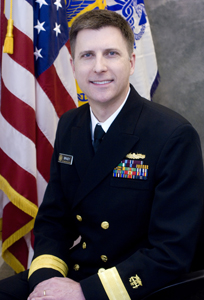Blog posts from AHRQ leaders
JUN
28
2018
At New Steering Committee, a Revitalized Commitment to Patient Safety
 In late May, the National Steering Committee for Patient Safety gathered for its inaugural meeting. I am honored to co-chair this steering committee along with my friend and colleague, Tejal K. Gandhi, M.D., M.P.H., Chief Clinical and Safety Officer of the Institute for Healthcare Improvement. The new committee represents an exciting opportunity to re-energize the Nation’s patient safety agenda.
In late May, the National Steering Committee for Patient Safety gathered for its inaugural meeting. I am honored to co-chair this steering committee along with my friend and colleague, Tejal K. Gandhi, M.D., M.P.H., Chief Clinical and Safety Officer of the Institute for Healthcare Improvement. The new committee represents an exciting opportunity to re-energize the Nation’s patient safety agenda.An important theme emerged at that first meeting: We are reaching the limits of what can be achieved by the familiar project-by-project or problem-by-problem approach to improving care. Instead of addressing these issues one by one, the time has come to step forward on initiatives that are wider in scope, better coordinated, and more intentionally collaborative.
We already know that collaboration has a powerful track record for fueling progress. The newly released AHRQ National Scorecard on Hospital-Acquired Conditions shows an 8 percent decline in hospital-acquired conditions from 2014 to 2016, resulting in $2.9 billion in hospital costs saved and 8,000 inpatient deaths averted.
In addition, an analysis last year showed that catheter-associated urinary tract infection rates dropped 54 percent across more than 400 long-term care facilities that participated in a patient safety project adapted from AHRQ's Comprehensive Unit-based Safety Program.
These successes point to the enormous potential tapped when like-minded professionals—clinicians, quality improvement specialists, policy professionals, research organizations, Federal agencies, providers, private partners, and others—work toward a common goal.
AHRQ, as the Federal Government’s lead patient safety agency, has a history of experience and expertise in four essential areas that emerged from the steering committee’s discussion:
- We believe that patient safety culture—that is, fostering a health care environment in which all participants believe and work in ways that prioritize patients’ wellbeing—is a critical first step to making care safer. Resources, including the AHRQ Surveys of Patient Safety Culture, enable health care organizations to assess how staff perceive various aspects of safety culture.
- By conducting research and providing training, tools, and data, AHRQ supports the development of learning health systems, or health systems that systematically learn about and improve care. In a learning health system, internal data and experience are systematically integrated with external evidence. When organizations establish successful learning systems, patients benefit from a “virtuous cycle” of constant learning that leads to better—and safer—care.
- Fostering better patient and family engagement has long been a theme integral to numerous AHRQ initiatives. Encouraging communication among providers, patients, and families, and engaging patients in all aspects of care improvement activities, can reveal important opportunities.
- Often intertwined with safety culture, clinicians’ physical and emotional well-being are major issues in their own right. It’s difficult to imagine safe care being delivered by clinicians who themselves do not feel safe. Since 2001, AHRQ has been funding research on clinicians’ working conditions to understand what causes burnout and explore interventions to combat it.
We also acknowledged the need to remain aware of specific targets for improving safety. All the familiar concerns, from medication safety to pressure injuries, remain important. Continuous learning, on both foundational and specialized topics, should drive future efforts to improve safety.
Watch this video in which Tejal and I describe some of the steering committee’s challenges and opportunities—and stay tuned! This is an exciting time as we leverage our collective body of information about patient safety, work together to improve care, and continue translating this knowledge into safer care for patients.
Dr. Brady is Director of AHRQ’s Center for Quality Improvement and Patient Safety.
Page last reviewed June 2018
Page originally created June 2018
Page originally created June 2018
Internet Citation: At New Steering Committee, a Revitalized Commitment to Patient Safety. Content last reviewed June 2018. Agency for Healthcare Research and Quality, Rockville, MD. http://www.ahrq.gov/news/blog/ahrqviews/new-steering-committee.html





















.png)









No hay comentarios:
Publicar un comentario